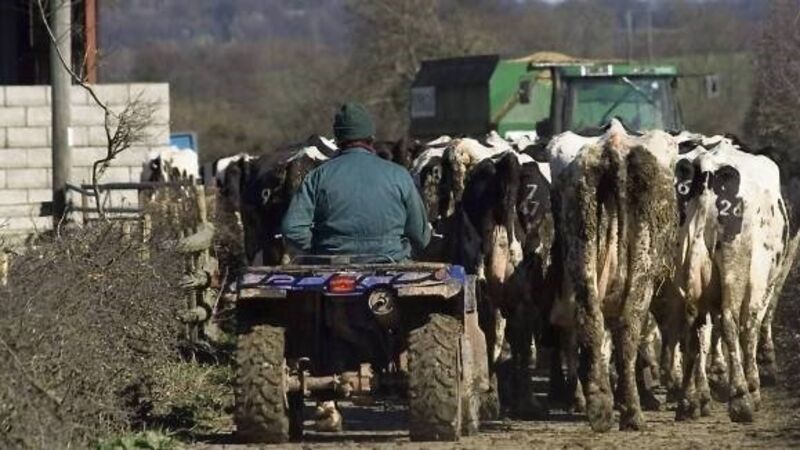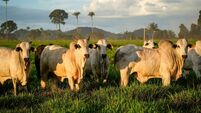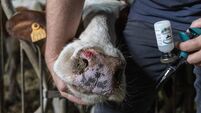Some earn €100,000 but many are part timers or pensioners

Record dairy earnings due to increased milk supply and a high milk price, but dramatically lower incomes in other sectors, were highlighted by the 2017 National Farm Survey results from the Teagasc Rural Economy Research last week.
The Survey measures Family Farm Income (FFI). This is calculated by deducting all farm costs from the value of gross output.
Family labour is not included as a cost, so FFI is the return to family labour, management and investment.
Where husband and wife work jointly on the farm (or father and son or daughter) the FFI includes the income of all family members.
If the farmer or another family member is employed outside the farm, that income is not included.
Neither is any income derived from a pension included in the FFI.
On 51% of farms, either the farmer or their spouse is engaged in off-farm employment.
On 27% of farms, one or the other receives a pension, reflecting the high average age of farm holders, at 56.
There are therefore obvious dangers in comparing data on FFI with data on wages and salaries elsewhere in the economy.
But the Survey data are immensely valuable in showing trends in farm incomes and productivity, having been produced annually since 1972.

The survey is carried out by staff of Teagasc who maintain the accounting records of 800 farms, which are representative of about 85,000 farms.
They do not include pig, poultry or horse enterprises, or any very small farm, where the value of annual output is less than €8,000.
The key figures and trends are shown above, with the average FFI reaching €31,400 in 2017, the highest level yet.
What is also clear from this graph is the extent to which incomes fluctuate from year to year, due to fluctuating prices, and variations in weather conditions, etc.
We can confidently expect that the figures for 2018, when they appear, will be significantly lower than last year, due to reduced prices for milk, and the difficult weather conditions experienced this spring.
The graph also shows pretty clearly that income levels in this decade are well above those found in the “Noughties”.
There has of course been a significant increase in the volume of agricultural output in this decade, with the volume of output in 2016 being 16% higher than in 2010, with a further increase of about 3.7% in volume last year.
There are very wide differences in incomes earned. The income earned from farming on 35% of farms last year was less than €10,000.
On another 35%, it was between €10,000 and €30,000.
On 7% of farms, incomes earned exceeded €100,000.
While the number of hectares farmed, and their quality, have an obvious impact, the most important determinant of income in 2017 was the system of farming, with incomes on dairy farms far exceeding those on other farming systems as they have done for many years.
Farm family income per hectare in the southern region (Munster plus Kilkenny, Carlow and Wexford) was €1,628 on dairy farms.
But it was only €387 on suckler farms, €502 on other cattle farms, €520 on sheep farms and €563 on tillage farms.

“Family farm income” includes subsidies received by farmers, in EU and national schemes, which are designed to protect incomes in rural areas or to achieve defined environmental objectives.
These direct payments do not vary very widely by farming system, and they averaged €393 per hectare in 2017. Their impact on farmers’ incomes is most obvious in the cattle and sheep sectors.
The table (right) shows average family farm income by enterprise, the amount of subsidy received, and the income which would have been achieved in the absence of subsidies.
Farm survey again highlights drystock farm vulnerabilities
The subsidy received by suckler and sheep farmers exceeded the farm family income, in the 2017 National Farm Survey results.
Without the subsidy, these farms would not have earned any income at all.
The “other cattle” system was only marginally better, earning an average income, net of subsidies, of only €600.
These figures are not peculiar to 2017.
Similar patterns applied in 2015 and 2016, and indeed for many decades previously.
Clearly, the average cattle farm and sheep farm is not “economically sustainable”, in the jargon of economists.
One reason for their low income is the smaller scale of operation of beef farms.
The average size of a suckler farm is 35 hectares, while the average size of other cattle farms is 37 hectares.
This compares with 56 hectares for dairy, and 61 for tillage.
But when you take account of this, by comparing systems on an income per hectare basis, wide differences remain.
The average income per hectare in 2017 was €693, but this varied from €1,530 for dairying, through €607 for tillage, to €451 for “other cattle”, €364 for suckler farms, and €322 for sheep farms.
(We may assume that the average quality of the hectares in use in sheep production is inferior to that in use in other sectors, and that the quality of land in use in tillage is superior.)
Another factor influencing the relatively low returns in beef farming is the older average age in this sector (this is reflected in a 27% figure overall for farm households in receipt of a pension, but it is 32% on drystock farms, compared to 11% on dairy farms, and 22% on tillage farms).
Despite their smaller farms and older average age, it is disappointing that beef farmers remains so unprofitable, after introduction of the Beef Data and Genomics Programme, new breeds, much increased use of AI, and new pasture production technologies.
And the beef sector faces severe challenges on top of its low incomes.
The first and most immediate is the fear of failure in the Brexit talks, exposing our beef to very high tariffs in its most important market.
Significant sales of manufacturing beef in Asia would not compensate at all for the forced price reduction in prime beef which could follow a “hard Brexit”.
The second challenge facing the sector is the ongoing review of the Common Agricultural Policy.
The withdrawal of Britain will probably mean some reduction in the overall size of the CAP, and there are widespread political campaigns for increased spending in other areas, which could further threaten the amount of money available for farming.
Farmer demands for an increase in expenditure seem unlikely to succeed.
A further longer term threat is slowly reducing meat consumption, as obesity increases, along with increasing concern for the environment and for animal welfare.
These concerns are predominantly in the rich western world, and their effect for Irish exporters could be to offset growth in meat consumption among middle classes in fastgrowing Asian economies.
Meanwhile, methane from belching bovines is the main reason our agricultural sector contributes one third of our greenhouse gas production, which the world agrees needs to be reduced globally to save the planet (and our descendants) from the effects of global warming.
In 2009, Ireland was given a target to cut its emissions of these global warming gases to 20% below the 2005 level.
The Environmental Protection Agency says that with the policy measures currently in place, the country is on course for only a reduction of 4% to 6% in global warming gases.
We, as a society could be faced with EU fines of €400 to €600 million per annum for failing to achieve these targets.
This would put a severe dent in the resources available to any Minister for Finance for social welfare, education, or housing.
From an economic perspective we would like to continue to expand our dairy herd, where we clearly have a marked competitive advantage.
This does not apply to beef.
Is it time to consider whether expanding beef production as envisaged in the Foodwise 2025 strategy is really in our national interest?













